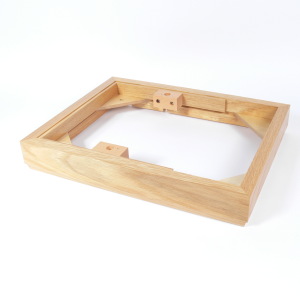
5. Sound Absorption
This is the amount of sound 'echo' damping within a room - not to be confused with 'sound proofing' which is a technique for stopping sound getting out of a room. Soundproofing is a big technical subject in its own right and outside the scope of this book.
In order to achieve an acceptable reverberation time (i.e. good sounding), a room needs to contain a certain amount of absorptive materials. Fortunately, a normal sitting room with a carpet, curtains, upholstered suite and other furnishings usually achieves an acceptable reverberation time. Modern minimalist rooms with lots of glass are a real problem that I am still working on.
Obviously, the enthusiast can fine-tune his room's baseline acoustics by adjusting the details of those basic furnishing items. The human body is sound absorbent too (there's a joke in there somewhere!) so don't forget that the listener's presence is affecting the room acoustics. I have been in a number of Hi-Fi listening rooms that were too live in the mid range until four or five people were present. For a solo listener these rooms needed more 'mass' absorption.
The extra absorption can be achieved in a number of 'invisible' ways that can broaden the absorption band into the high frequency area to great advantage. My aim is to use materials and techniques that achieve smooth broad band absorption rather than narrow band 'problem' curing solutions.
Our ears are very sensitive to the characteristics of rooms so that we feel uncomfortable in rooms with large variations (anomalies) in the frequency response and reverberation times.
I have found, over the years, that manmade materials tend to have narrow-band effects but natural materials have broadband responses. I therefore try to avoid using foam, rubber or plastic materials as dampers, but these days soft furnishings are only stuffed with foam. Old chairs or settees with horse hair and kapok, and cushions stuffed with feathers sound much better in a listening room. Leather upholstery sounds better than vinyl, and I suspect that leather also masks much of the negative effect of the foam filling. Layers of Dacron over the foam help too.
Narrow band effects and acoustic anomalies are caused by several related factors. The narrowness of the band itself is clearly audible and is therefore noticeable in the overall sound. The real problem, however, is in the phase anomalies created at the start and end of the narrow band. They are associated with any rapid rise or fall in a response curve and the ear is very sensitive to them and so notices the anomaly.
Carpet and carpet underlay
Carpets can have a profound effect on the sound of a room. A fully fitted
carpet covers a large proportion of the surface area of a room and so exerts
a marked effect.
It is possible to overdo the damping effect with a wall to wall carpet, though rarely, but bear it in mind. In general terms a thick pile carpet (especially of high wool content) is much better sounding as it absorbs over a broader band than a thin manmade Nylon fibre one. Obviously, the carpet to avoid is the cheap nylon rubber backed type - it sounds terrible!

Diagram 5.13: Felt underlay is better than rubber
Carpet underlays are clearly audible in their effects too, so avoid the ubiquitous rubber underlays that shops now expect you to want, and choose good old-fashioned underfelt... and buy the best quality. Felt underlay improves the low frequency absorption of the carpet. It feels better to walk on than the rubber too.
You can vary or tune the effect of carpeting by using rugs on top of a fitted carpet, especially in the area between the listener and the speakers. A large good quality rug, such as Indian or Chinese carpet placed in the centre of a room on an existing carpet can be extremely successful.
Alternatively it could be laid on stained and polished floorboards, parquet flooring or with a thin carpet surround. (When surrounded by polished wood I would recommend two layers of best quality underfelt.) The best sounding rooms I have had have used this 'layered' technique.
Curtains and Windows
Curtains are very useful indeed in controlling delay time and absorbing mid and high frequencies. They are more effective if they go right down to the floor and are lined.
A thick material like velvet or velour is most effective, and you can make them more effective still if you allow extra widths of material so that the folds are deep. The deeper the folds, the more mid range is absorbed. It is important to always line curtains. If a thin curtain material is preferred, an interlining of Dacron could be used.

Diagram 5.14: Thick curtains will absorb mid and high frequencies
Windows absorb quite large amounts of bass because both the glass itself and the flexing of the glass absorb bass. When you draw a curtain across a window you create a complicated kind of diaphragm absorber using the window recess as a 'cavity absorber' and the window glass as a 'resonant absorber'. It's no wonder that the room sound can change dramatically when you draw the curtains!






















